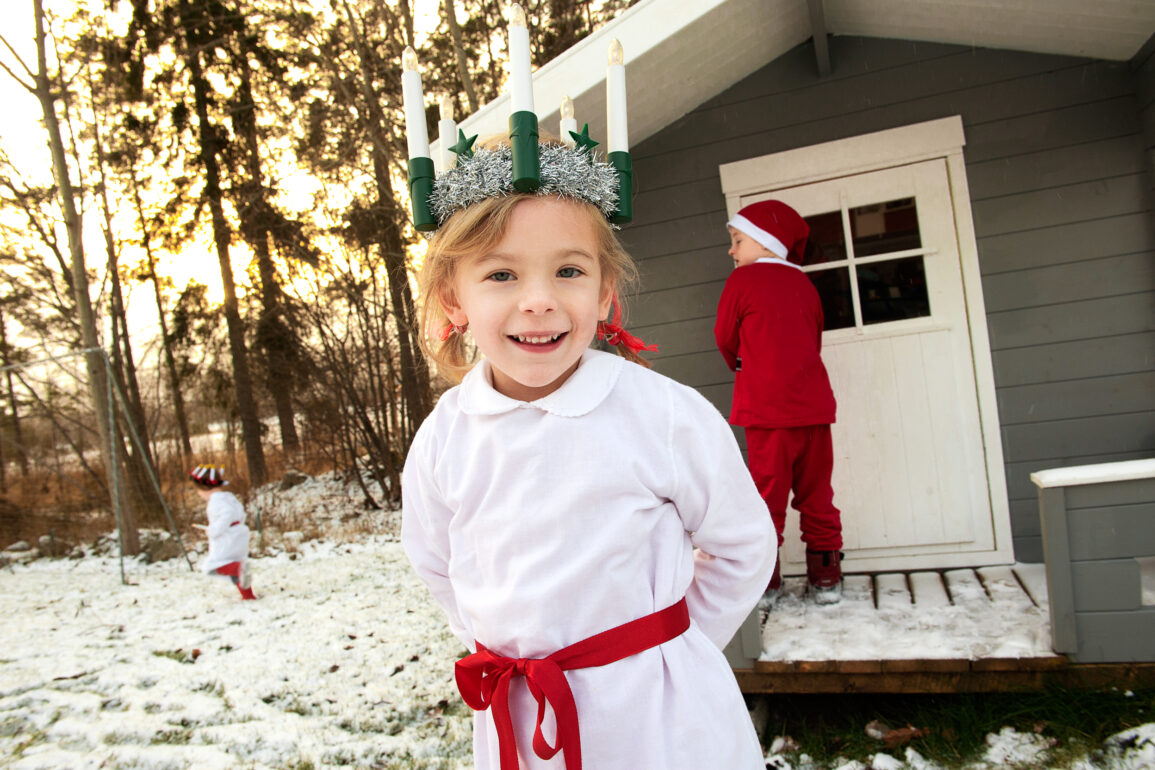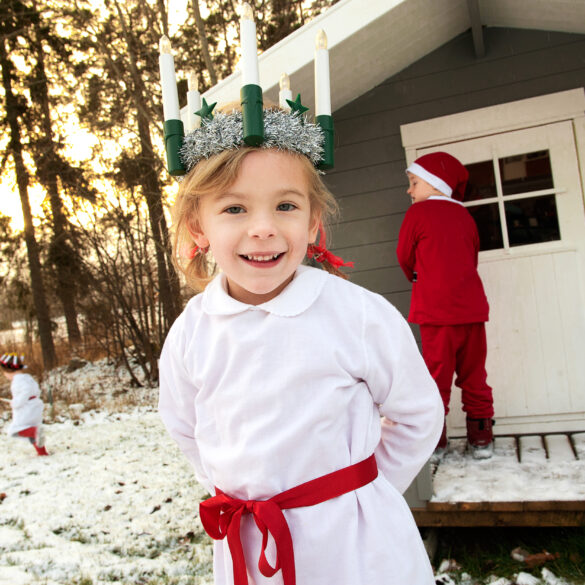Is this your first festive season in northern Sweden? Not sure what to expect? Let Marina Georgescu be your guide to a merry Skellefteå yule.
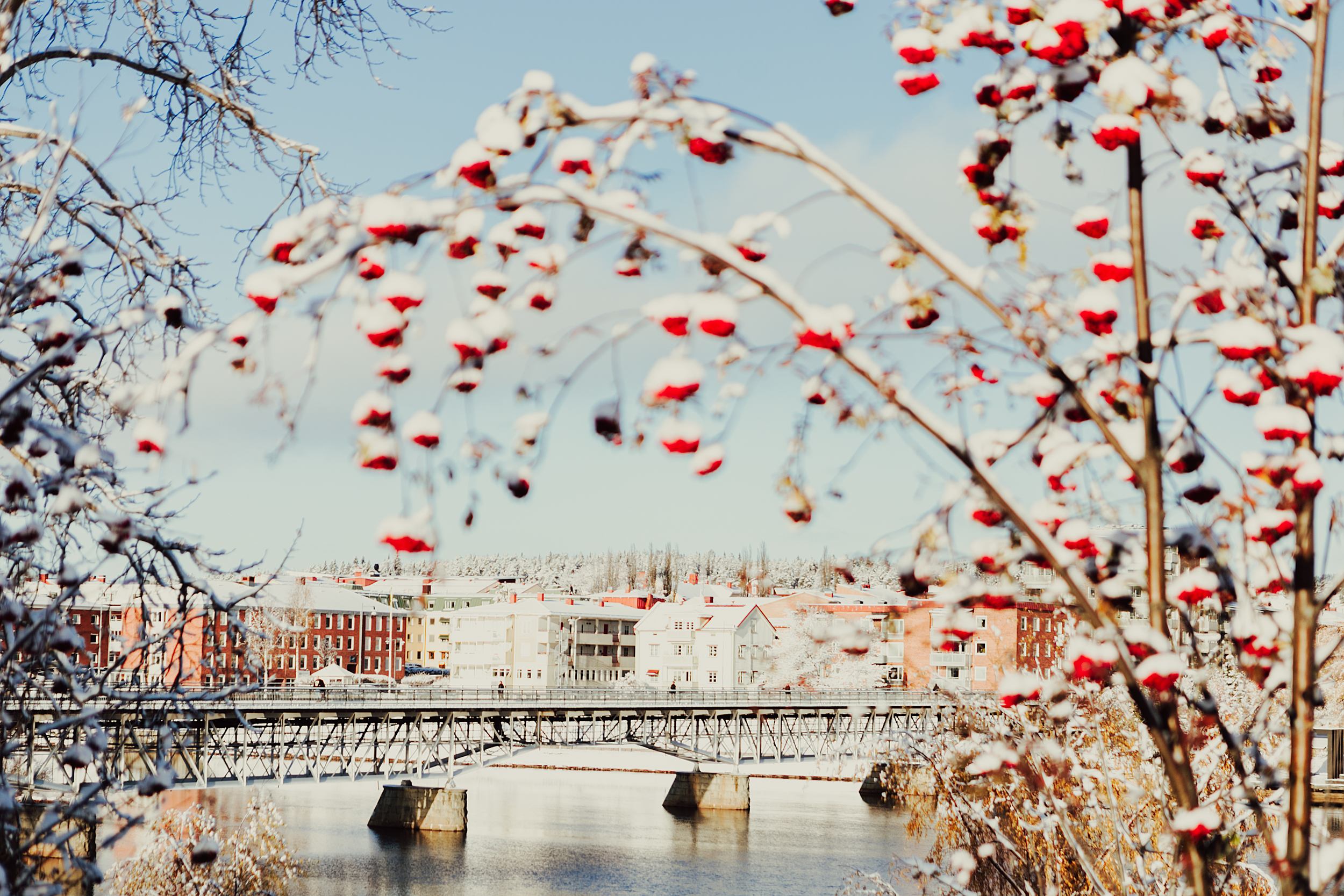
The most glorious and highly-awaited moment this winter will be the first snowfall. A wonderfully powdered light snow that glitters in the light and resembles a magical scene from Frozen. Then, just like that, the dark hole you felt you were living in comes to life as the snow brightens up the landscape and you can start getting the skis ready for some action.
Before the lovely Christmas decorations are put in place, November and December are the darkest months of the year in northern Sweden, and although the northern lights can make nights beautiful, it still can be hard for some newcomers to adapt to the shortening of days and the lengthening of nights.
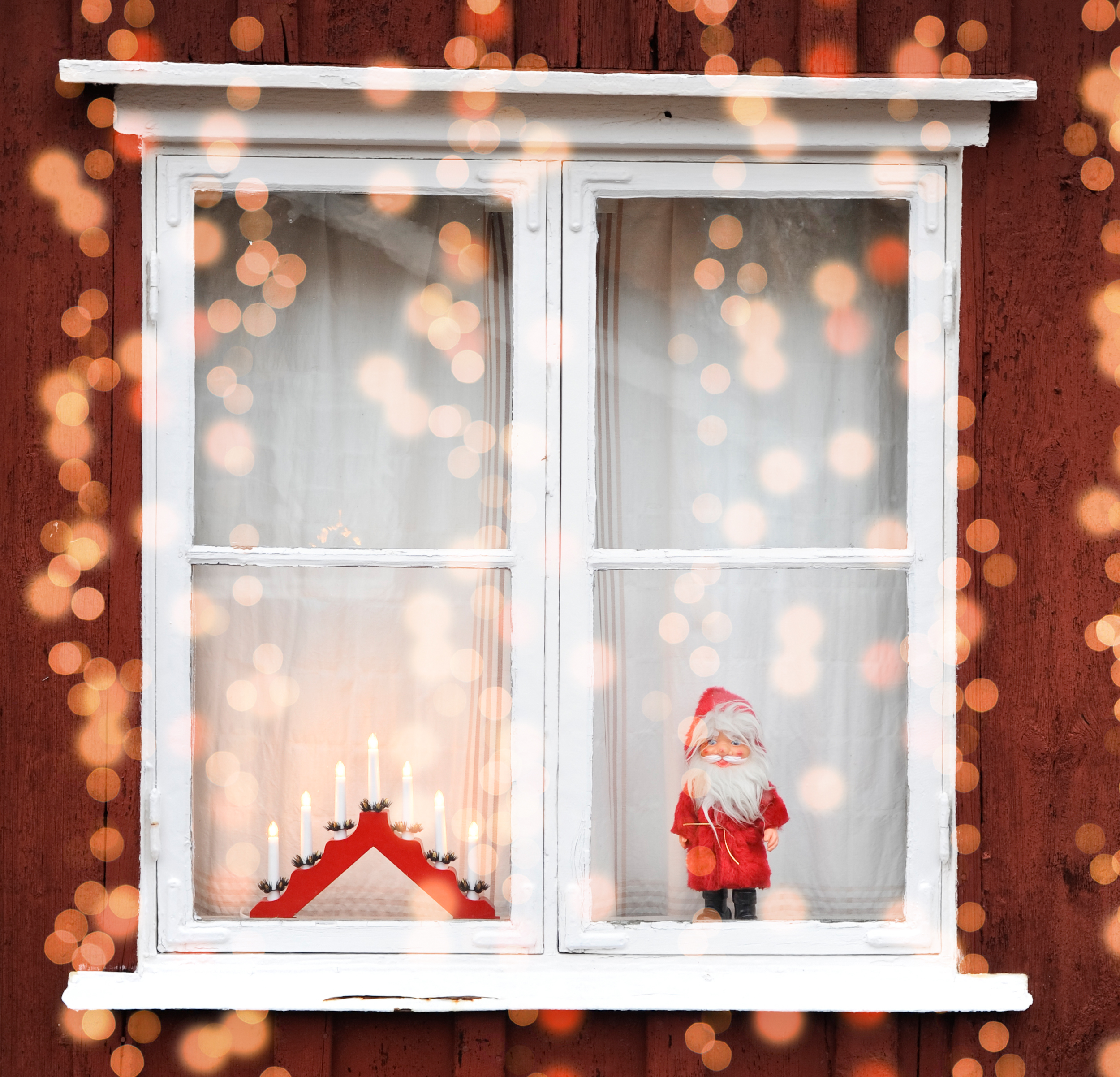
Colour, light, and joy
Spending much of your day in darkness is not an easy task but Christmas lights everything up with its colour, light and joy.
Swedes have hundreds of years of experience and a wide variety of traditions at this time of the year that will help you get more acquainted with the culture and enjoy these dark months. The first tip – the easiest and most helpful – is to light candles in the house and fires in the stoves and woodburners. The use of warm lights to create ambience is also very important during this period. The goal is to make your house cosy because you will be spending a significant amount of time in it. Advent begins this year on Sunday, November 27 and will continue for the next three Sundays. Although Sweden is not a religious country, many people use Advent, which was originally a Christian tradition, as a kind of framework for preparing for Christmas. This first day of Advent is the day when it is finally socially acceptable to start putting up the Christmas decorations.
What is Advent?
The word ‘Advent’ is derived from the Latin word ‘adventus’, meaning ‘coming’. Originally, there was little connection between Advent and Christmas. During the 4th and 5th centuries, it was a season of preparation for the baptism of new Christians at the January feast of Epiphany, and Christians would spend 40 days in penance, prayer, and fasting. By the 6th century, Roman Christians considered it to be the second coming of Christ. However, it was not until the Middle Ages that the Advent season was explicitly linked to Christmas.
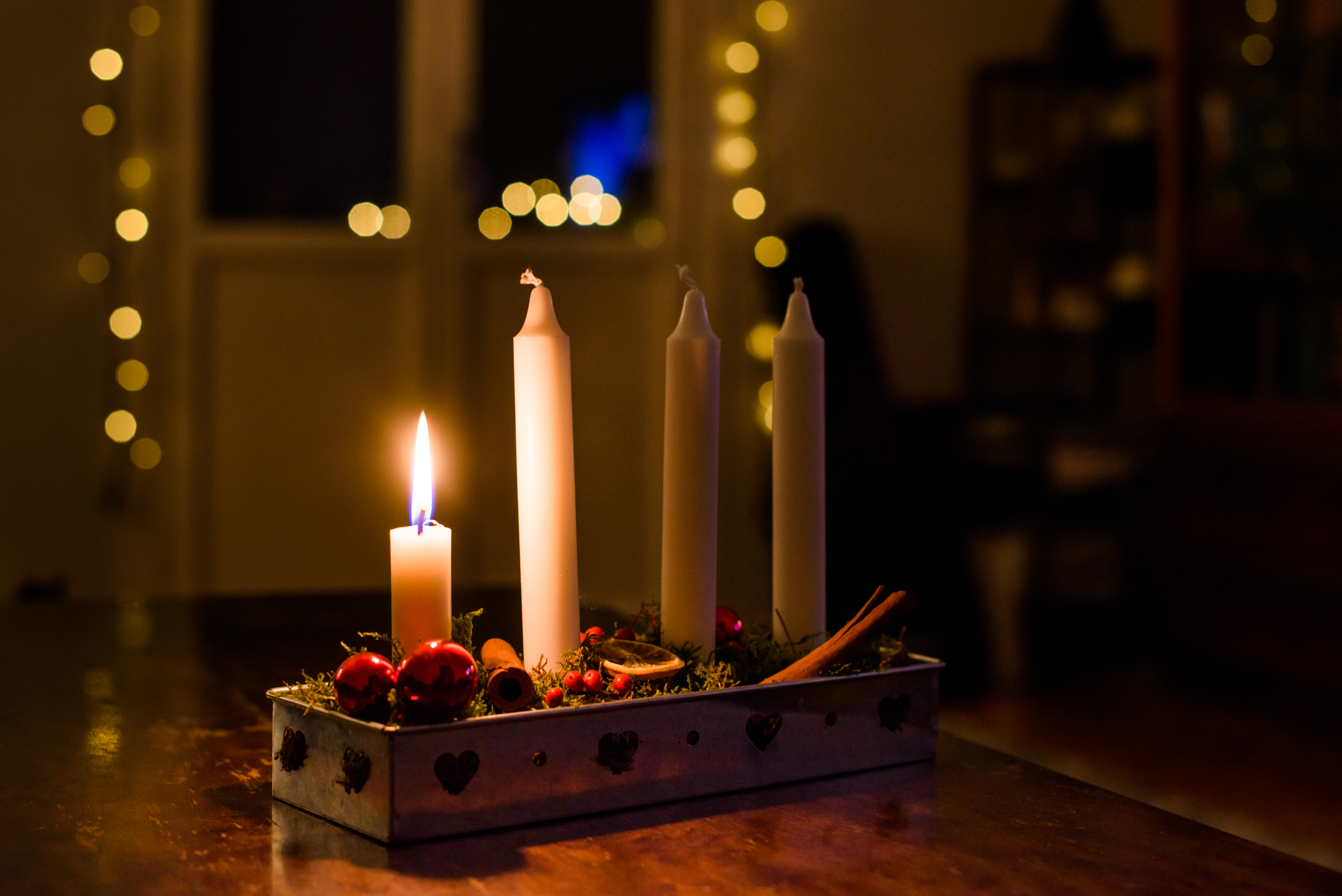
How it is celebrated today?
In Sweden, Advent is celebrated over the four Sundays before Christmas. It is customary during this time to light a candle every Sunday. There is a special candlestick for this with space for four candles: adventsljusstaken. When the original candlestick came to Sweden from Germany, it had seven candles, one for each day of the week, which were lit every Advent Sunday. However, it was not until the 1920s that the four-candle version became commonly used. On the first Sunday of Advent one candle is lit, on the second Sunday two are lit and so on, until by the fourth Sunday of Advent all four candles are lit. The candles can be lit at breakfast time or fika, while enjoying a saffron bun. Each Sunday, this ritual helps create expectation and excitement, as everyone is looking forward to Christmas.
Advent stars for all!
Another tradition is the beautiful Adventsstjärnor (Advent stars) which can be seen in almost every home’s windows and were invented in the German city of Herrnhut in the 1880s and first appeared in Sweden in 1923. There is also a calendar, which has 24 windows with surprises in each one; the family opens one box each morning to see what trinket or gift is inside. The first Adventskalender in Sweden was produced by the Swedish Girl Guide Association in 1934. Later in 1960, SVT (Swedish television channel) produced its own TV version and has done so every year with 24 episodes at around 15 minutes each. It’s a very popular programme enjoyed by children and adults alike.
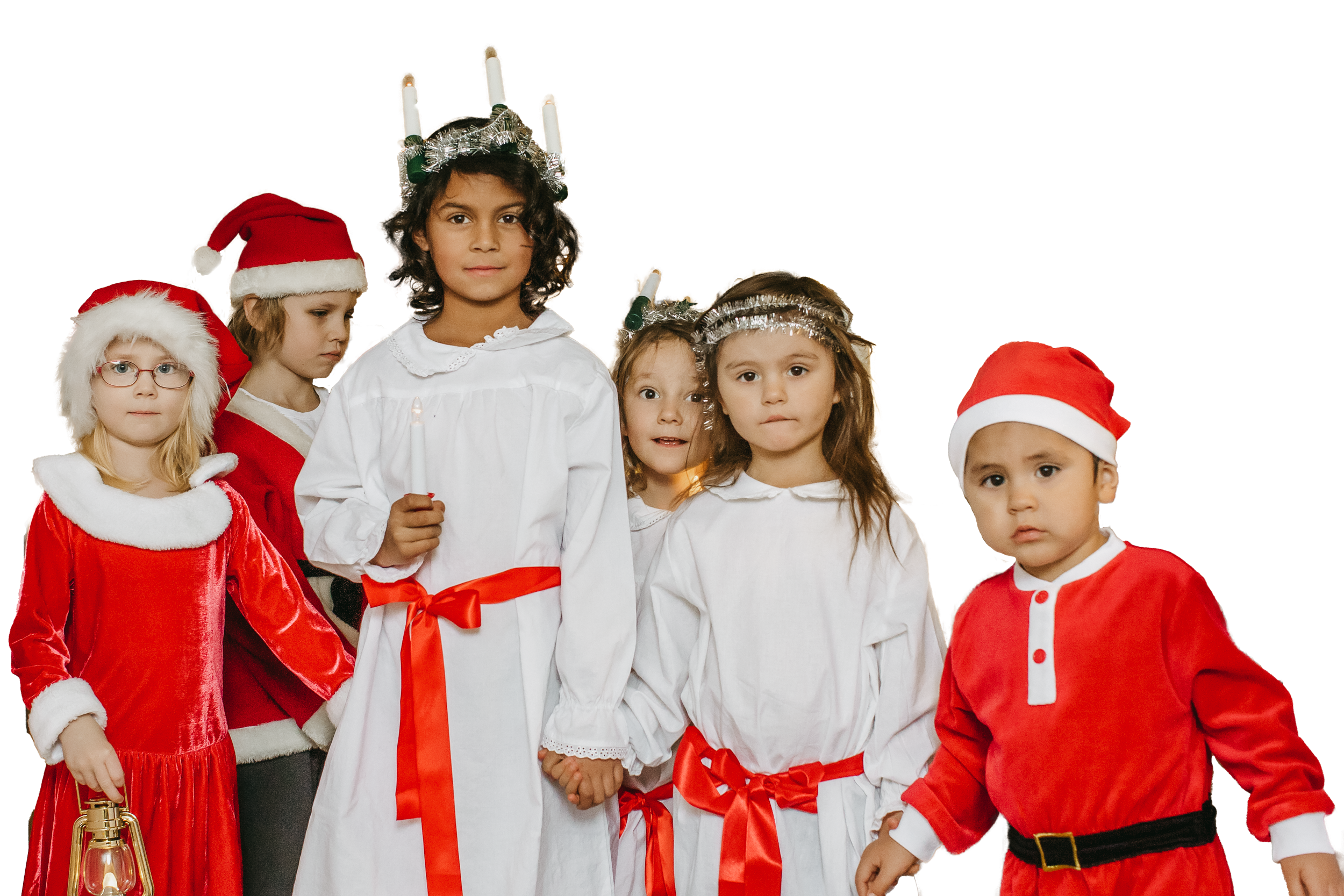
Lucia
’Natten går tunga fjät runt gård och stuva. Kring jord som sol förlät, skuggorna ruva. Då i vårt mörka hus, stiger med tända ljus, Sankta Lucia, Sankta Lucia.’
(’Night walks with a heavy step round yard and hearth, As the sun departs from earth, shadows are brooding. There in our dark house, walking with lit candles, Saint Lucia, Saint Lucia!’)
One of Sweden’s most particular and special celebrations has its roots in both prehistoric and medieval Swedish history. In prehistoric Sweden, at the darkest time of the year, it was believed that evil demons and trolls would come and cause trouble. On this night, a being known as ‘Lussi’ or ‘Lussegubben’, was lurking. He was also known as ‘Lusse-Per’ or ‘Lucifer’, and was identified as the Devil himself. To prevent bad things happening, people held watch throughout the night, often indulging in little feasts to keep them going.
When Christianity came to Sweden and introduced the Julian calendar, this longest night fell between December 12 and 13. Later in 1753, when the Gregorian calendar was introduced (the one we use today), this day became the winter solstice. But the original tradition had remained, and when each day in the calendar was assigned to a specific saint, it was Saint Lucia’s name that ended up on that special day of December 13. Her name originates from the word latin ’lux’, which means ’light’, and that is exactly what she brings: ‘hope and light’ into the dark.
Gingerbread elves
It seems that the first white-clad Lucia appeared in a Västergötland country house in 1764, but it was not until 1927, when Stockholm proclaimed its first Lucia, that it became a popular tradition in Swedish society. Since then, it is customary for the chosen Lucia to wear a white gown, a red sash and a crown of candles on her head, and to lead a procession every December 13, accompanied by handmaidens (tamor) carrying candles and ’star boys’ with cone-shaped hats, all dressed in long white robes. A Lucia procession sometimes includes children dressed as gingerbread biscuits and elves. A special atmosphere is created when the well-known songs are heard in the distance and the Lucia procession enters a room in darkness.
It is an important tradition for many people that has become a symbol for Sweden, a light in the darkness. The small children celebrate at home, and the celebrations can continue at preschools and schools, and may also be held at the workplace. The most magnificent Lucia celebrations are the ones celebrated at local churches. So be sure to check out which church near you has a Lucia celebration.
Julafton and Julbord!
Finally, the long-awaited day: Christmas Eve. After several weeks of preparation that includes a lot of decorating, cooking and gift shopping, everyone is ready for the big night. In Sweden, the main celebration is on December 24. The reason for this is the method the Nordic countries used to measure time and dates; therefore, based on ancient ways of counting time, a day would typically start after sundown. Even though every family has its own tradition, the festivities begin early in the afternoon when everyone gathers at home at precisely 3.00 pm to watch the 1958 Disney Christmas special on SVT1: Kalle Anka och hans vänner önskar God Jul! (Donald Duck and his friends wish you a Merry Christmas).
Quack quack quack
This show has been airing on SVT1 since 1959, and is watched by millions every year. It is one of the three most popular television events of the year. Kalle Anka is a very serious matter, during which no one talks, except to recite favourite lines along with the characters. You might not even be able to call a friend at that time, because they’ll probably be watching Kalle Anka and will not want to be interrupted!
Bring back Kalle Anka!
But how did this happen? It seems that it was just an accident of history. The show aired in 1959 for the first time when Swedes had just started to own televisions. And since there was no other television channel until 1969 – people just got used to it and converted it into a tradition. Actually, in the 1970s there was an attempt to pull the show off the air because the Disney programme clashed with the prevailing political ethos, but the television station was bombarded with letters, phone calls, and negative press. It was one of the worst
audience crises in SVT’s history.
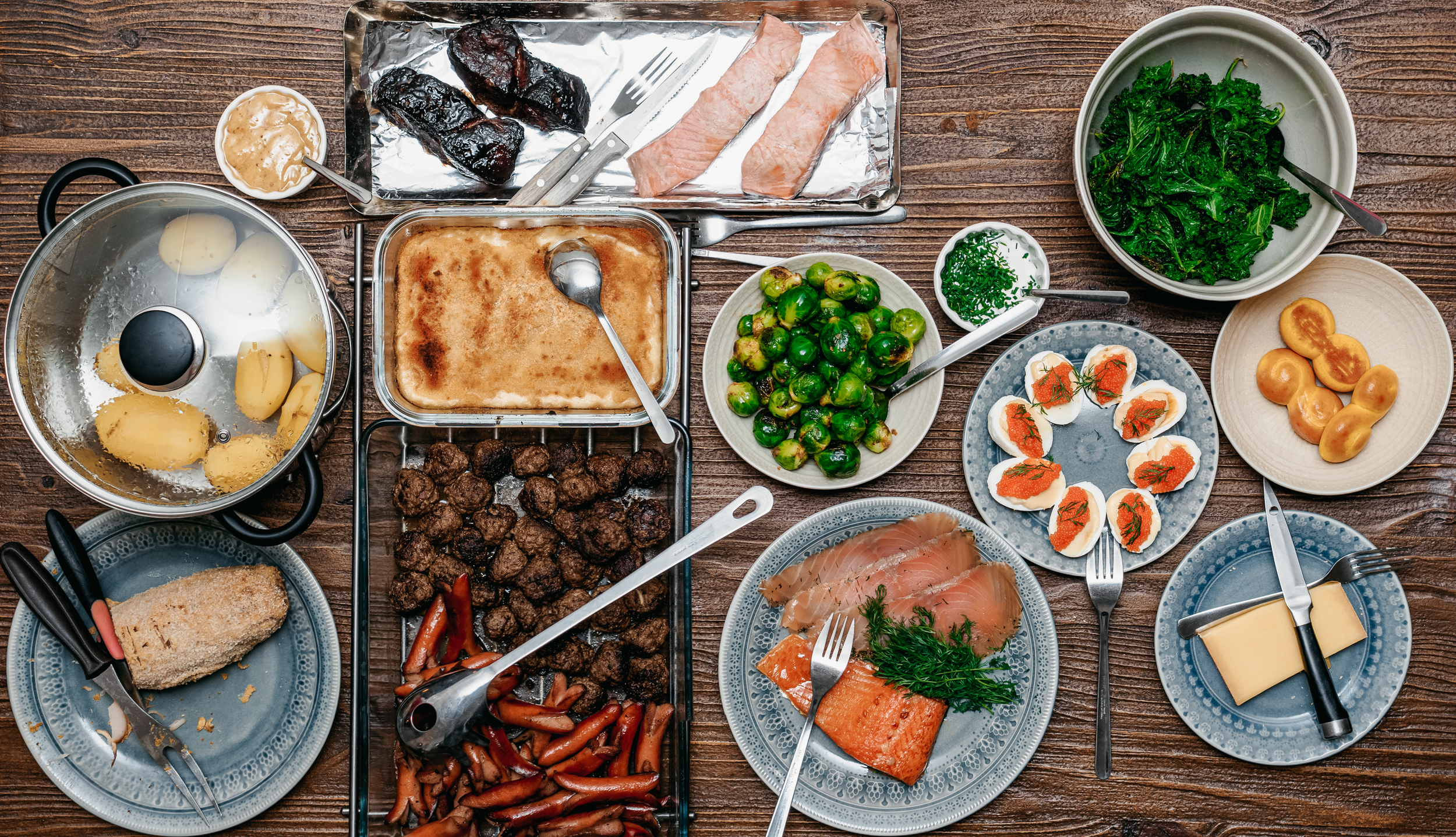
Get ready to feast!
A julbord or Christmas dinner has a lot of courses that are served buffet- style so you can pick and mix as you wish. The number of dishes can vary, but these are the typical ones: pickled herring; a fish course dominated by salmon but which can also include crayfish and prawns; cold meats like julskinka (Christmas ham); pates and terrines; hot food which includes meatballs, prinskorv (smoked sausages), and glazed ribs; Jansson’s temptation (thinly sliced potatoes with cream and anchovies); red cabbage; brown cabbage; kale; and finally desserts such as rice pudding, chocolate fondant with glazed cranberries or pear tart with star anise are traditio
OMG, you will literally burst with so much comfort food!

What about the presents and Santa?
Well, you don’t have to wait too long. People start opening their presents as soon as it gets dark on December 24. The presents are under the Christmas tree and can be wrapped with a rhyme, funny poem or limerick that hints at what’s inside. Then comes the big event after dinner – can you guess? Yeah, it’s Santa time!
In Sweden, Santa Claus is known as Jultomten or Tomte and has evolved from a little angry man guarding the local agriculture to a sweet old man that loves a bowl of rice pudding with cherries and almonds, which people leave on the front porch for him to eat. Many families have an adult member dress up as Santa to knock on the door and hand out the gifts to the family. Then, that same adult walks back in from ’buying something at the shop’. As in many other cultures it is all about being together with your family and friends while enjoying good food and drinks – What Swedes refer to as having a ’mysig tid!’ (a cosy time!).
We hope this has given you a broad insight into how Christmas is celebrated in Sweden, and a better understanding of the culture here. And, as a final tip, it’s important to remember that the holiday season ends on January 13 – people take the decorations down and dance around the tree before getting rid of it.
Merry Christmas!
